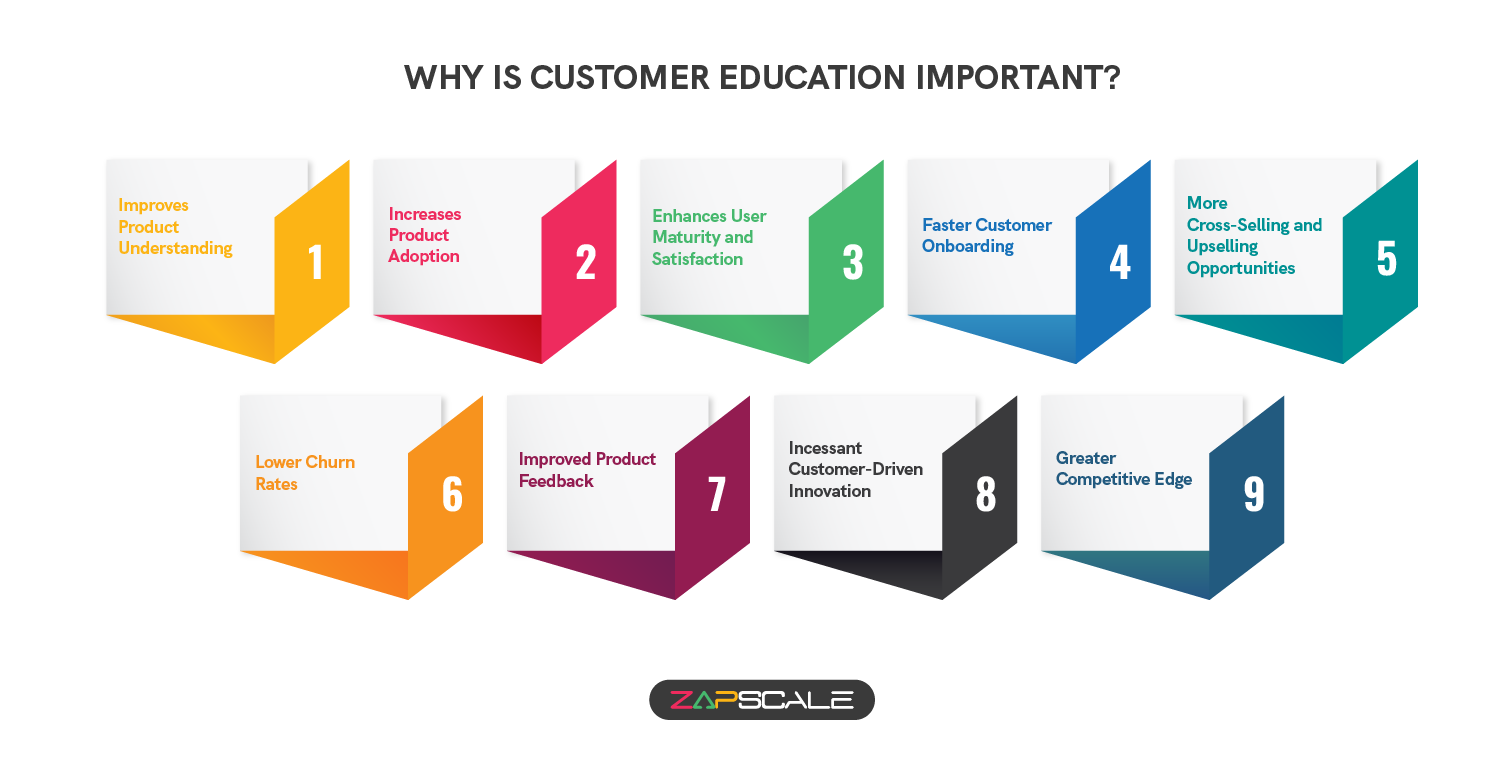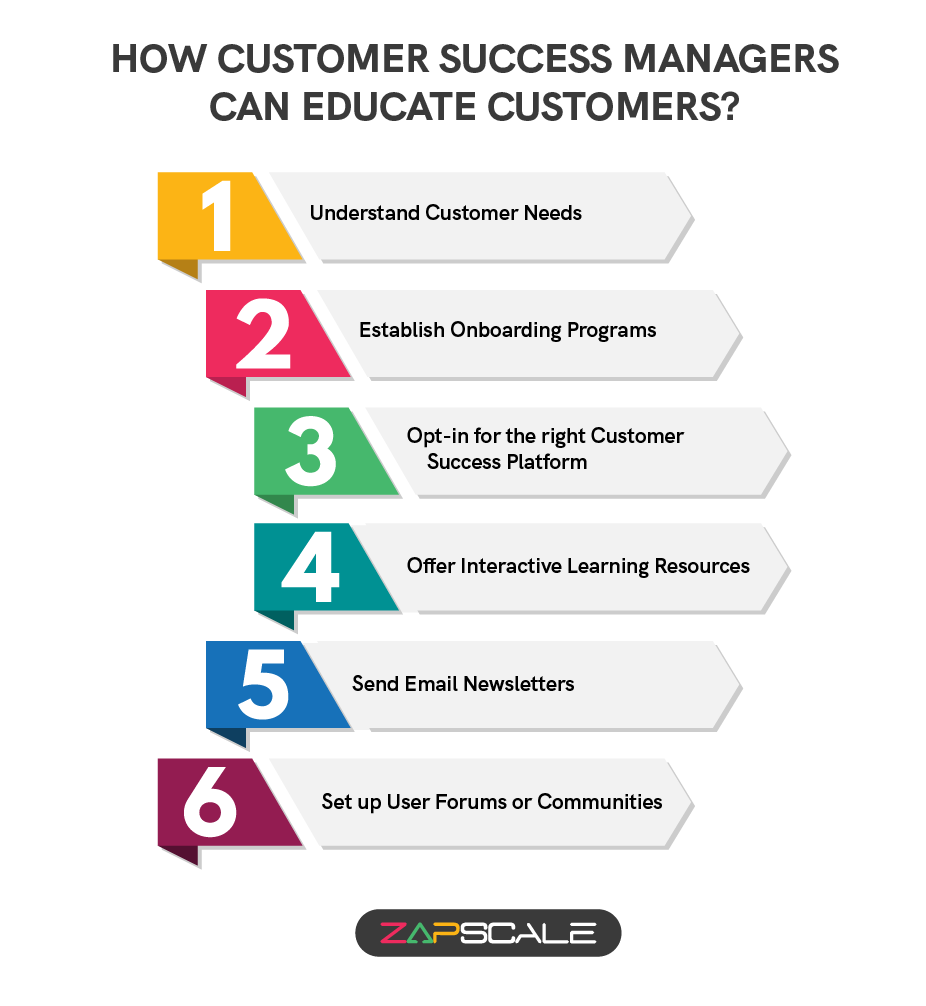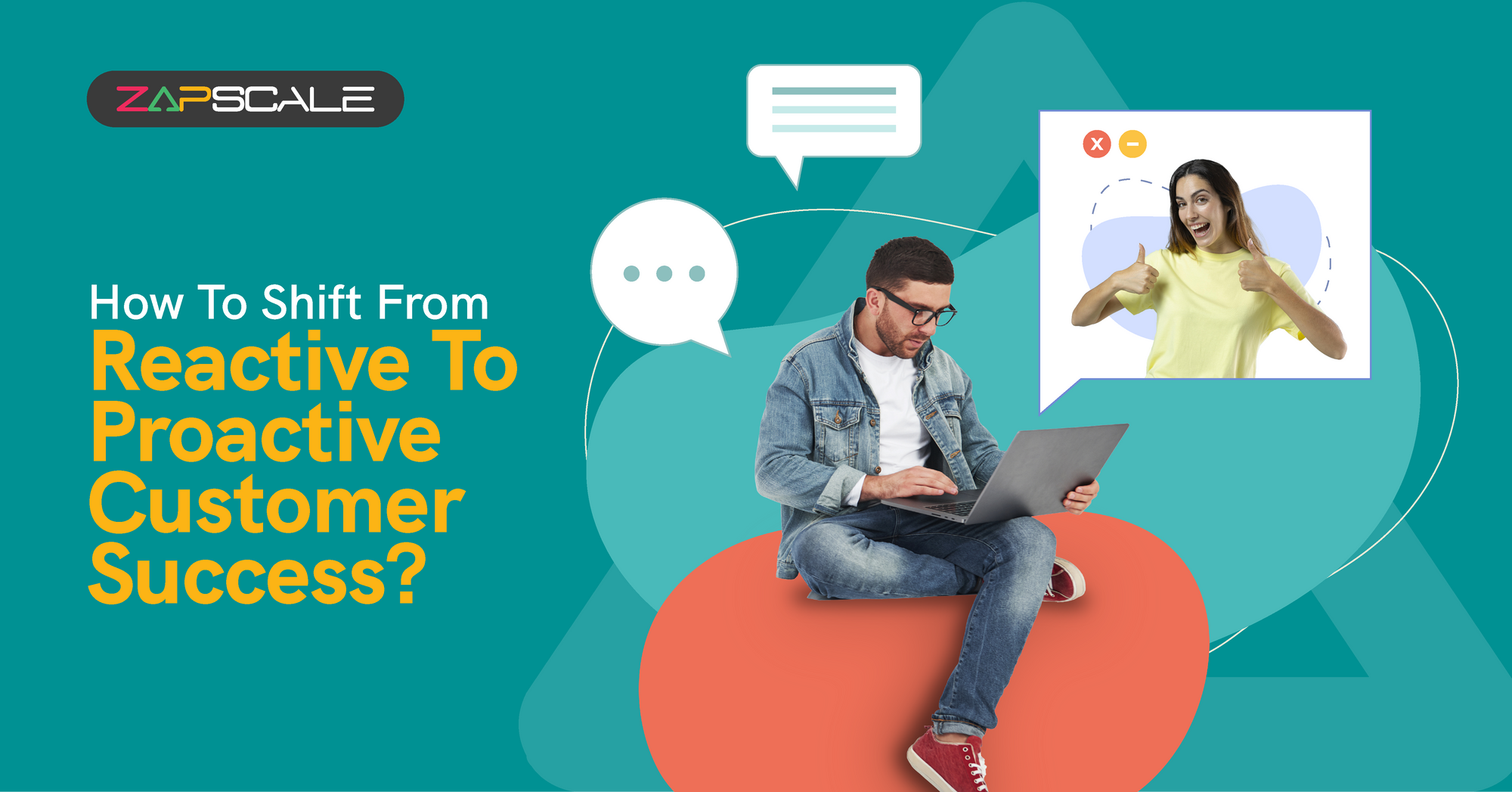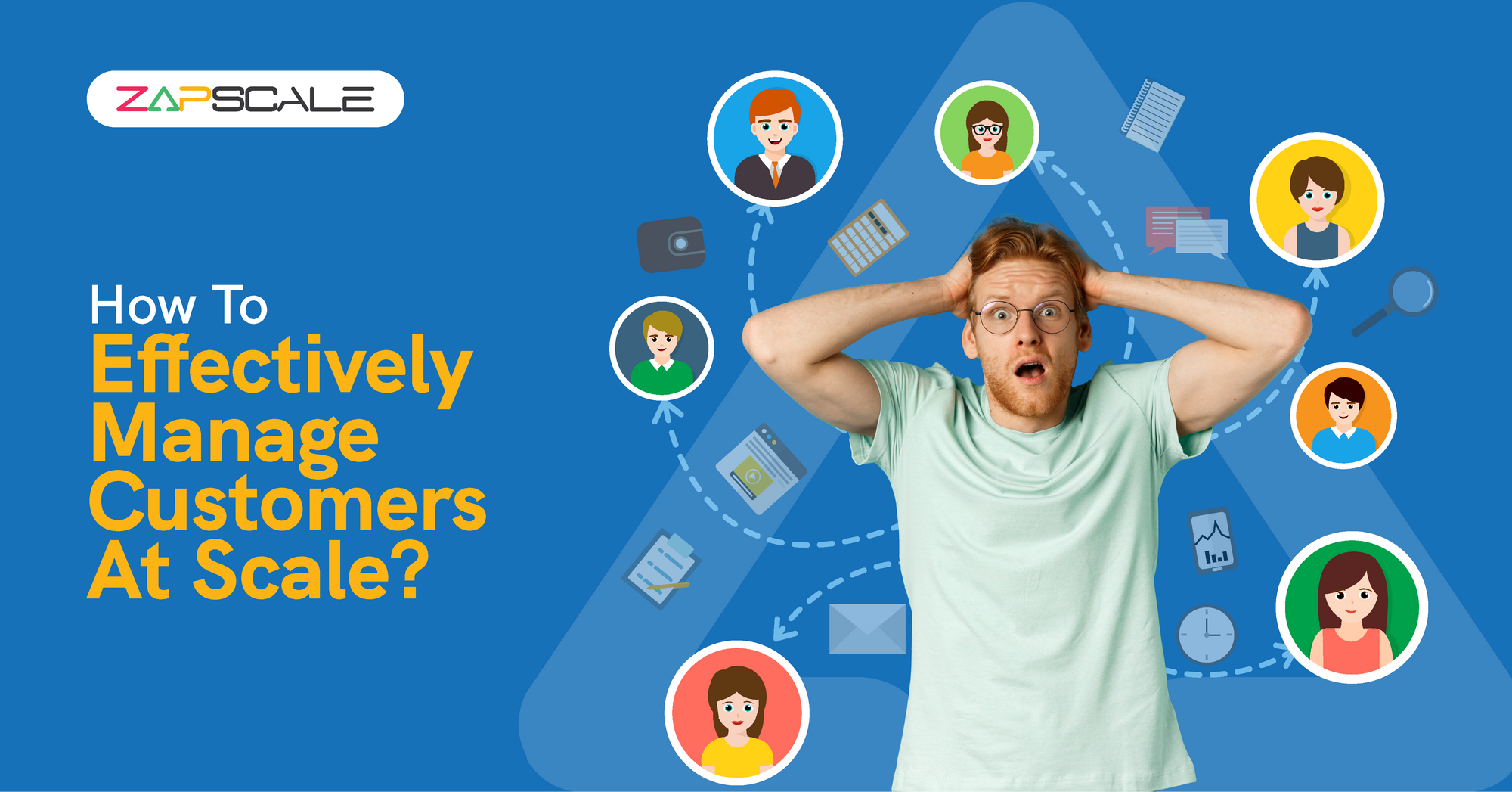CATEGORY > Customer Success Management
How Can Customer Success Managers Educate Customers?

Introduction
Organizational success requires a strong focus on Customer Education. Customizing learning experiences requires an understanding of customer requirements. Giving customers authority encourages self-assurance and a sense of ownership. Businesses that prioritize these values foster thriving ecosystems and happy customers.
Today, we’ll find out how Customer Education can accelerate Customer Success, increase customer retention, and significantly reduce churn.
Join us as we examine the concepts of principles of understanding, empowerment, and continuous learning, helping you along the way to happy customers and prosperous businesses.
What is Customer Education?
Customer Education is simply the process of offering customers resources and training to help them comprehend and use a product or service effectively and efficiently.
With the help of Customer Education, customers are empowered to get the most out of the service, ultimately boosting customer happiness, loyalty, and retention. Businesses (especially SaaS-based) increase customer confidence and user competency by teaching customers about best practices, product features, and troubleshooting.
In the end, this strengthens the bond between the customer and the brand and propels long-term success.
Consider "Customer Education" as your customers' tour guide, guiding them through the process of using your goods or service one step at a time.
Customer Education makes sure that users, regardless of experience level, never feel lost or left behind because there's always something new to learn.
We’ve established the fact that Customer Education is instrumental in ensuring that customers comprehend and get value out of your product or service. You know what’s the best part? It starts well before a sale and extends well beyond it.
Leads are more likely to become customers if they are informed of the advantages of your product.
Your job as a CSM (Customer Success Manager) is to maximize customers' total product experience and pleasure by teaching them after the transaction, especially on how to use the product successfully.
The Significance of Customer Education
In the modern business landscape, effective Customer Education is critical for increasing happiness, loyalty, and revenue growth.
Let's look into its strategic relevance with these pointers below.

1. Improved Product Understanding
Customer Education gives users deep insights into the features, benefits, and capabilities of products, enabling them to get the most out of them for their particular requirements. It facilitates informed decision-making by promoting a thorough comprehension of features and use cases, guaranteeing optimal use within specific settings for improved results and pleasure.
2. Increased Product Adoption
A powerful tool like customer education can help your target audience accept your product more widely. Persuading more individuals to try incorporating your product into their daily routines or workflows through effective communication of the value proposition and benefits of your offering can enhance adoption rates and market penetration.
3. Enhanced User Maturity and Satisfaction
Customer Maturity is facilitated via Customer Education. It represents progress beyond the mere adoption of a product. Well-versed users find the best value but with different standards. NPS (Net Promoter Score) is one satisfaction metric used to measure advocacy. Education strengthens ties among the community and advocates, fostering loyalty.
Improved understanding of the product lowers friction, guaranteeing satisfied customers and continued involvement for enduring customer loyalty.
4. Faster Customer Onboarding
A well-designed customer education program streamlines the onboarding process for new users by providing them with clear and effective guidance during the initial setup and configuration phases.
By making tutorials and learning resources easily accessible, CSMs aka Customer Success Managers shorten the time and effort it takes for users to feel comfortable with your product, allowing for a more seamless transition to active usage and engagement.
5. More Cross-Selling and Upselling Opportunities
Customer Education provides opportunities to introduce current customers to advanced or upgraded products that improve their experience in general.
To promote incremental revenue growth and expand your product ecosystem, you can leverage your existing customer relationships by showcasing the benefit of additional offers and upsell paths.
Overall, effective Customer Education drives customer satisfaction and revenue growth by empowering users and fostering informed product usage, facilitating upselling and cross-selling opportunities.
6. Lower Churn Rates
Well-informed customers have a higher probability of finding value in your product and succeeding in reaching their goals.
As a result, they are less inclined to switch to alternative products or discontinue their use of your product.
Customer Education contributes to the long-term maintenance of a more profitable and stable customer base by lowering churn rates.

7. Improved Product Feedback
When customers have a thorough understanding of the features and functionalities of your product, they can provide more detailed and insightful feedback based on their usage experiences.
To better satisfy consumer wants and expectations, this input is crucial for pinpointing areas for improvement, resolving pain points, and prioritizing product updates or additions.
8. Incessant Customer-Driven Innovation
Insights and comments from knowledgeable and involved customers are invaluable for product development and innovation.
9. Greater Competitive Edge
By focusing on customer education as a strategic differentiator, you gain a competitive advantage in the marketplace. Businesses that thrive in educating and supporting their customers stand out as trusted partners and industry leaders, building a reputation for superior service and customer satisfaction that distinguishes them from competitors and generates long-term growth and success.
Effective Methods For Customer Success Managers To Educate Customers

1. Understand Customer Needs
To properly educate customers, you must understand their wants, pain points, and objectives.
Trace their path from the point of initial awareness to the post-sales phase. Tailor educational content to address obstacles at every turn.
Ask for feedback for ongoing refinement. Using comprehensive insights, customized content, and incremental enhancements, companies can provide customers with the necessary information, cultivating more robust connections and augmenting total contentment.
2. Establish Onboarding Programs
Create specialized onboarding programs to assist new users in completing the initial configuration and usage of the product.
For new users, specialized onboarding programs simplify the initial setup and use of products. A smooth transition is ensured by breaking down complicated operations into manageable segments.
Furthermore, providing interactive lessons and hands-on support improves user comprehension and confidence. Businesses that prioritize customer support and advice provide favorable experiences that enhance product adoption and satisfaction.
3. Opt-in for the right Customer Success Platform
Customer Success Software is essential for customer success managers since it provides them with more customer information, enabling them to educate their customers effectively.
Select a system that notifies you of every action your customers take as this will provide you with full-fledged insights while facilitating precise timing and content for training sessions.
4. Offer Interactive Learning Resources
To improve customer education and assistance, incorporate a set of interactive learning tools straight into the product interface.
Contextually appropriate support is provided by in-app guidelines and tooltips, which arrive just in time for customers when they need it most.
Short, user-friendly video tutorials provide visual demonstrations of key features and tasks, making them simple to understand and refer to.
Meanwhile, a robust knowledge base serves as an extensive library of articles, frequently asked questions, and troubleshooting manuals, enabling users to solve problems on their own and progress at their own speed. By using an integrated approach, customers are guaranteed to have the tools necessary to confidently explore the product and get the most out of their experience.
5. Send Email Newsletters
Launch a well-thought-out email newsletter campaign to inform and engage your audience.
These newsletters are an excellent way to disseminate information about new products, insider tricks, and motivational success stories.
You may grab the reader's interest and promote more reading by striking a balance between being informative and concise. By communicating with your audience regularly, you can build a sense of community and connection that will eventually increase engagement and brand loyalty.
6. Set up User Forums or Communities
Promote user forums or online communities as active centers of customer service and communication. Customers can interact with peers, ask for assistance, and share insightful information on these platforms.
Cultivate a culture of cooperation and knowledge exchange to encourage active involvement.
Use moderation to keep the conversation civil and on-topic while preserving a helpful and educational atmosphere. By fostering these communities, you support users' continuous learning and engagement with your product or service and help them feel a feeling of loyalty and belonging.
Conclusion
In the journey of Customer Success, education is critical as it allows users to become adept in the use of products or services.
Customer education goes beyond simply delighting customers as it instills a sense of ownership and belonging.
By offering personalized onboarding experiences and interactive learning resources, organizations can indeed create a network of competent brand advocates.
ABOUT THE AUTHOR
Popular from Customer Success Management
Quality Content,
Straight To Your Inbox!
Subscribe for the latest blogs, podcasts, webinars, and events!

Write a Blog
If you have experience in CS and
a flair for writing, we’d love to
feature you.
Write to us on
hello@zapscale.com





